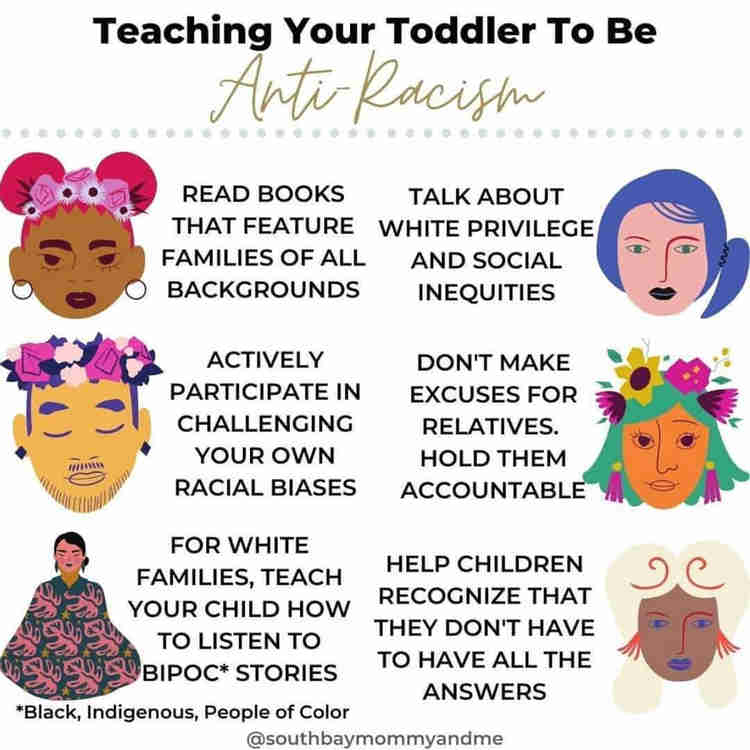In a time where we see the issue of racism still prevalent in our society we really need to look inwards and see what it is that is driving our perspectives and views when these issues arise. This is a time for reflection, understanding, education, advocating and striving to act to make changes. The first step is to become aware of the manifestations of racism and privilege in our own lives, in the systems we create and support, and in our culture. We need to ask ourselves some very important questions that were beautifully raised by our friends at Trillium Montessori:
What is racism? Who is affected by it? What causes it? What role do I play in all of this? What unexamined beliefs do I hold about children and families? What unexamined beliefs do I hold about myself? How do my beliefs inform my actions? What are the short and long term consequences of my intended and unintended actions?What can we do about it? What are we going to do about it?
You cannot remain silent during these times, we have to take a stand and Maria Montessori always put it so beautifully:

The second step is to dismantle and reorganize the systems that support racism and privilege and actively support each other and our families to acknowledge, honor, and appreciate differences. The only way we will be able to guide our children to grow is if WE ARE open to learning ourselves, learning is the first step to teaching. As a parent and a child’s first educator it is our role to take steps to make these changes in our homes so that we can be advocates and voices for our Black sisters and brothers in humanity. We need to make a commitment to fight against racism not just stand silent and the way we can do this when we are teaching very young children is the following:

The third step is actioning – taking steps forward to fight and really advocate for anti-racism. The following 5 tips that were included in the following downloadable book are a great start and it really does define some of the crucial steps towards building an anti-racist foundation:
Beyond the Golden Rule A Parent’s Guide to Preventing and Responding to Prejudice – Written by Dana Williams (click to download)
5 TIPS: THE PRESCHOOL YEARS
- Be honest. Don’t encourage children not to “see” color or tell children we are all the same. Rather, discuss differences openly and highlight diversity by choosing picture books, toys, games and videos that feature diverse characters in positive, non-stereotypical roles.
- Embrace curiosity. Be careful not to ignore or discourage your youngster’s questions about differences among people, even if the questions make you uncomfortable. Not being open to such questions sends the message that difference is negative.
- Broaden choices. Be careful not to promote stereotypical gender roles, suggesting that there are certain games, sports or activities that only girls can do or only boys can do.
- Foster pride. Talk to your child about your family heritage to encourage self-knowledge and a positive self-concept. (Educate and also include traditions of other cultures and heritages in your home)
- Lead by example. Widen your circle of friends and acquaintances to include people from different backgrounds, cultures and experiences.
Another point to add to this is to refrain from sharing images of black and white children embracing each other, whilst you may think it is harmless in fact you are supporting a false narrative that unity looks like focusing on kindness instead of equity. However, to be equitable we should not just embrace diversity and kindness but go one step further and confront issues head on to push for real equality. Research shows that when you actively take a stand and talk more openly about race rather than ‘we are all equal’ children’s attitudes to race improves. This is where the change happens. Check out the following blog – “Why white parents need to talk to their children about race”.
I always recommend to share resources and books that have been written by BIPOC (Black, Indigenous, People of Colour) as a true representation of the issues at hand and to be more culturally appropriate. Some book recommendations to start talking about different races with your young children & explore diversity and issues of racism:

These books and more are available to buy from our Guide & Grow Shop – Click here
A few other resources include:
Raising Little Allies-to-Be… – DOWNLOAD PDF BELOW ?
Another good blog with loads of resources is this one “Your Kids Aren’t Too Young To Talk About Race” from Pretty Good – Written By Katrina Michie

- Anti-racism resources for white people – Click here
- The ultimate list of diverse & inclusive books to support nature-based-learning – By Wonderkin. Click here ?
As a final note, this issue is something so important to me and our village we have created. I really want people to not just sit on the side lines and think that is okay, it is not okay. We all have to be active players in this fight for anti-racism and make changes that start in our homes from birth. Black lives matter so that we CAN all be equal in humanity and to my sisters and brothers in humanity we are with you, we stand with you, we will fight for you and we love you.
Explore the fundamentals of Montessori parenting with this free video by Sylvia Arotin, offering insights and strategies to empower and educate your child.




